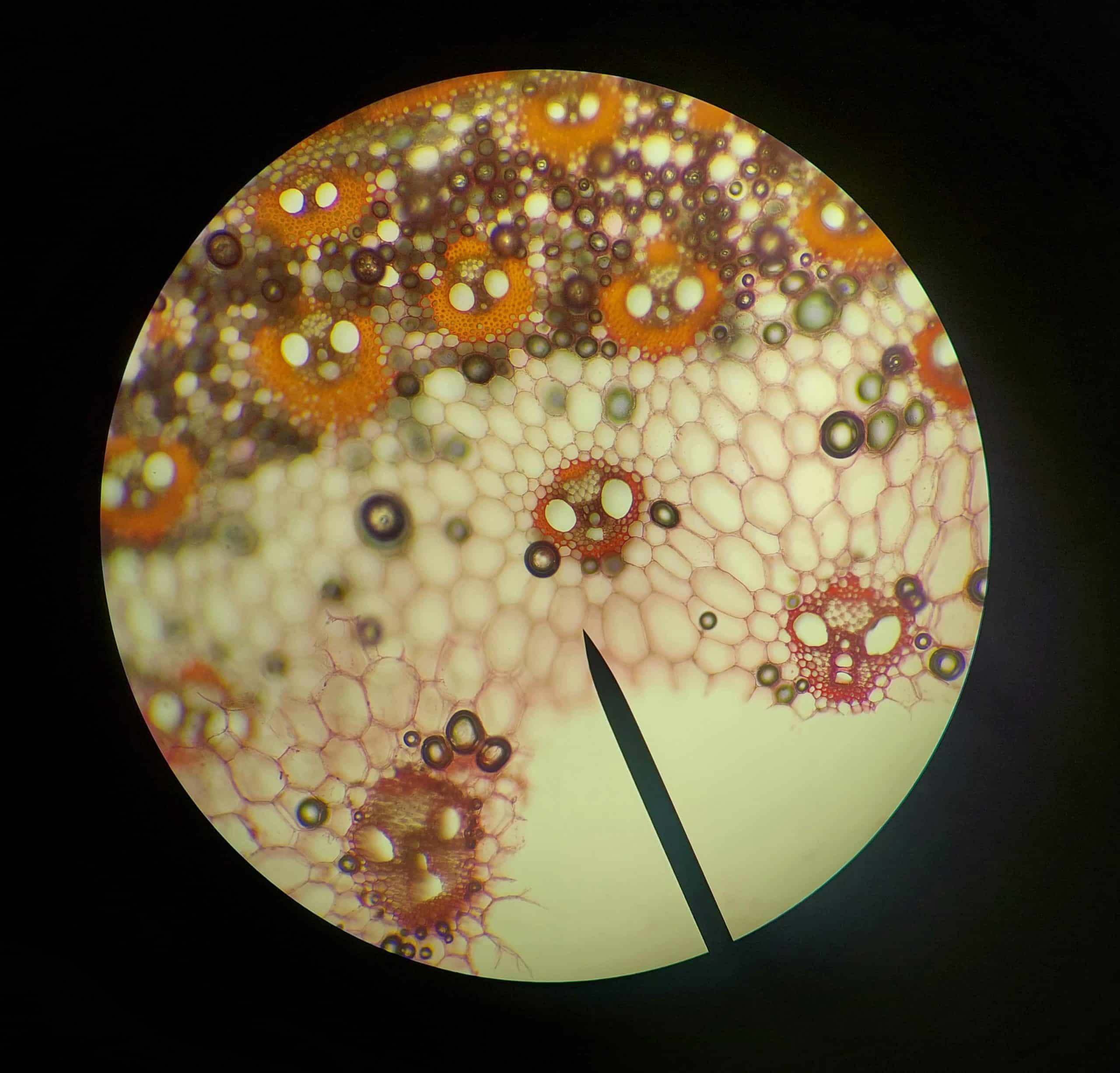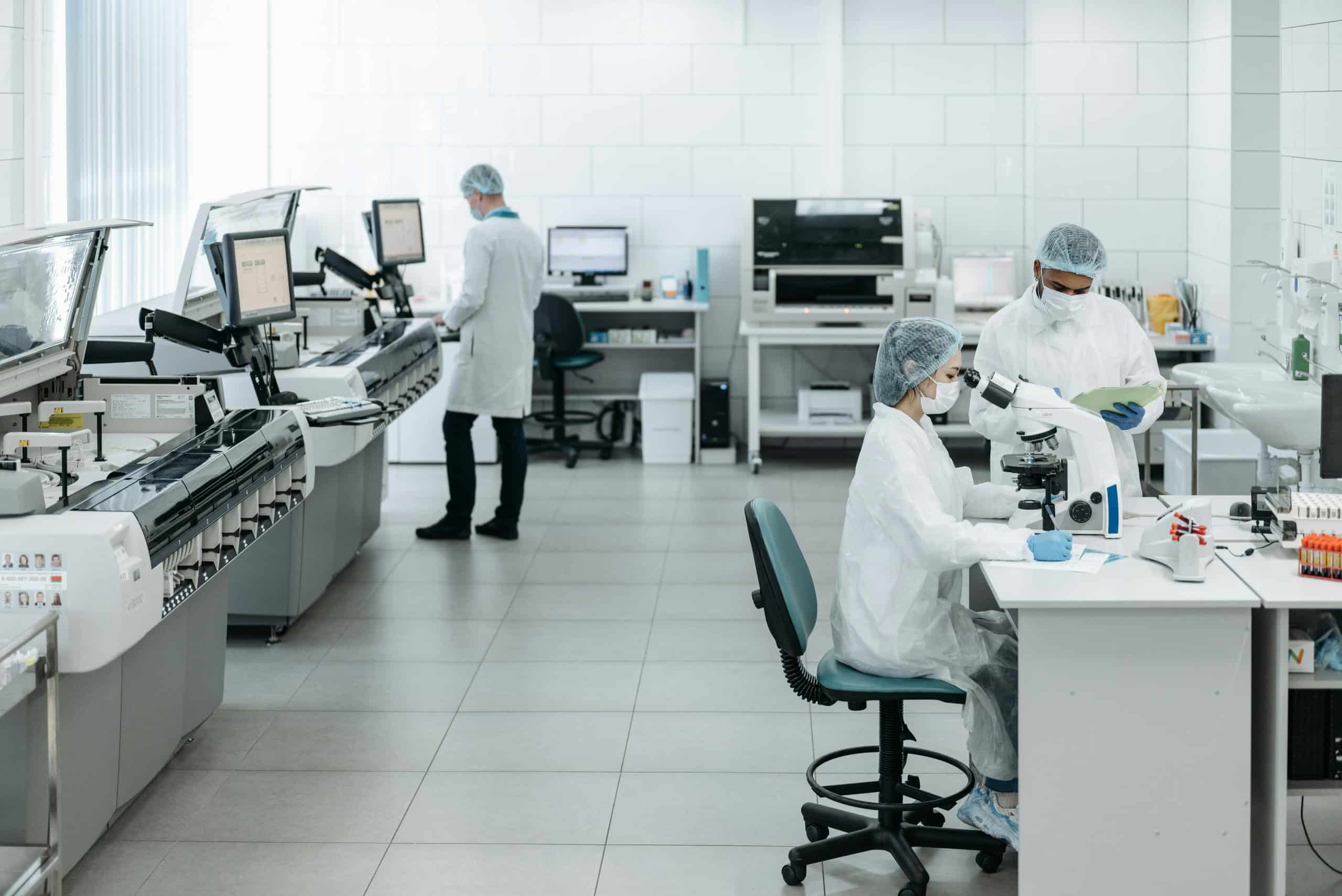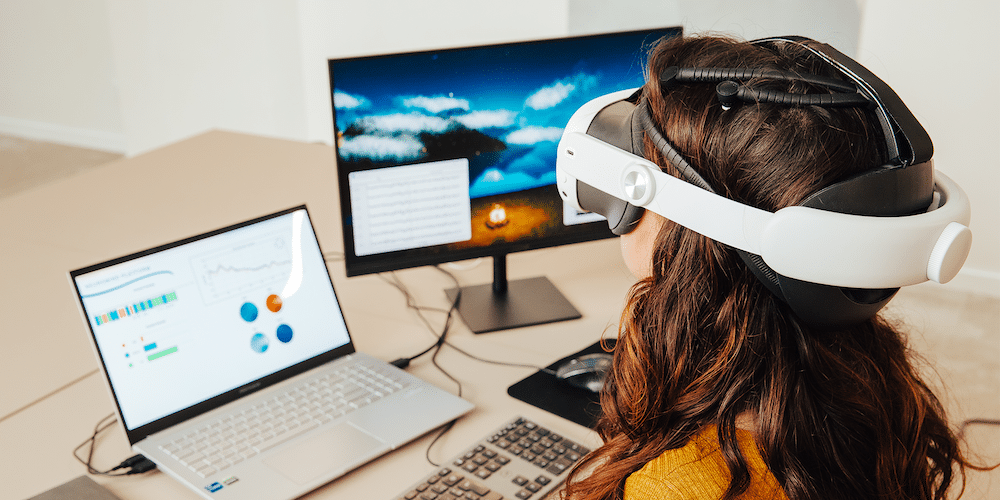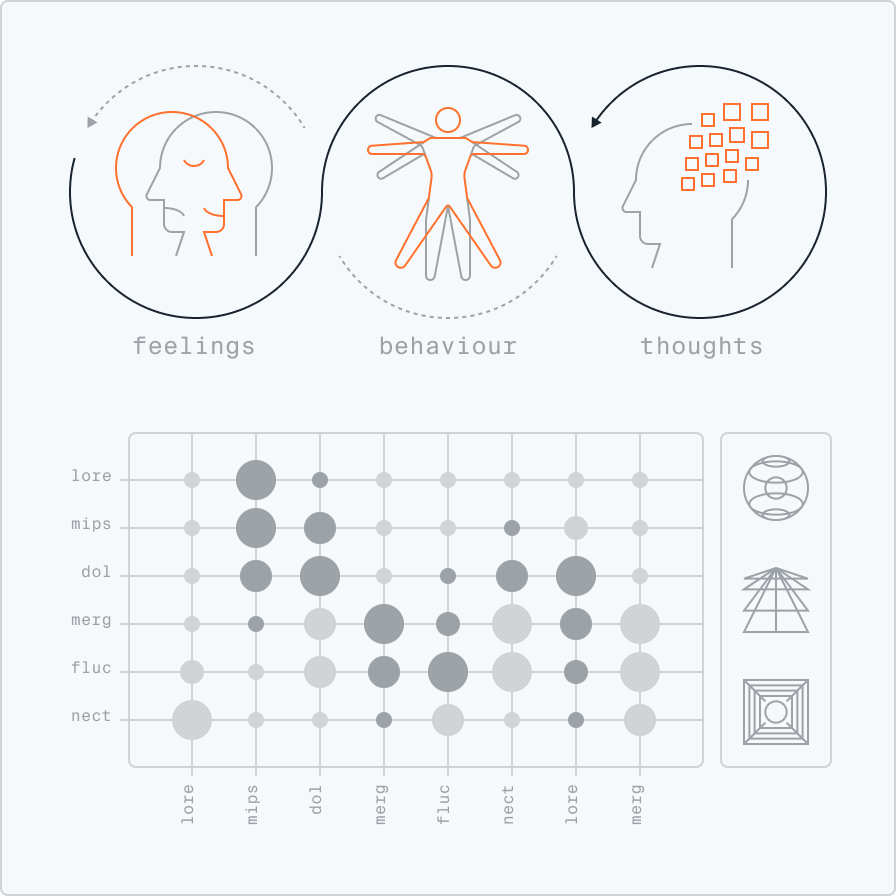Klinik natija bilan molekulyar va fiziologik bashorat qiluvchi mexanizmlar o‘rtasidagi bo‘shliqni yopish uchun, tibbiyot aniq va kuchli ko‘rsatkichlarga — biomarkerlar deb ataladigan belgilarga suyanadi. Bu o‘lchanadigan molekulalar yoki biologik xususiyatlar kasallikni erta tashxis qilish, kasallik rivojlanishini va terapevtik aralashuvlarga javobni aniqlik bilan monitoring qilishga imkon beradi, shunday qilib shaxsiy davolash strategiyalariga poydevor yaratadi. Diagnostika, prognoz va dori ishlab chiqishda ular inqilobiy ta’sir ko‘rsatganiga qaramay, turli muhitlarda ularning spetsifikligi, sezgirligi va standartlashtirilishi bilan bog‘liq muammolar hanuzgacha mavjud. Biomarkerlarning potentsialini qanday to‘liq kashf etish va bemor parvarishini inqilobga aylantirish mumkin? Ushbu maqolada shuni va Neuromind qurilmasida biomarkerlarning noyob qo‘llanilishini ham ko‘rib chiqamiz.
Biomarkerlar ochiladi: tabiat signalarini tushunish
Biomarker, biological markerning qisqartmasi, salomatlik yoki kasallik holatini baholashda ishlatilishi mumkin bo‘lgan har qanday o‘lchanadigan biologik parametrdir. AQSh Milliy Sog‘liq Institutlari (NIH) ga ko‘ra, biomarker quyidagicha ta’riflanadi: “normal biologik jarayonlar, patogen jarayonlar yoki terapevtik aralashuvga organizmning farmakologik reaksiyalari uchun ob’yektiv ravishda o‘lchanib baholanadigan xususiyat.” [1]
Oddiy qilib aytganda, biomarkerlar tanamiz ichida nima sodir bo‘layotganiga oid alomatlar kabi.
Biologik marker biologik jarayonlardan hosil bo‘lgan har qanday o‘lchanadigan ko‘rsatkichni anglatishi mumkin. Masalan, biomarkerlar hujayra va molekulyar darajada (DNA, RNA, oqsillar va metabolitlar) kuzatilishi mumkin.
Biomarkerlar to‘qima namunalaridan yoki suyuq biopsiyalardan (qon, siydik, tupurik va hokazo) olinadi. Bundan tashqari, fiziologik yoki morfologik xususiyatlarni aks ettiruvchi boshqa turdagi biomarkerlar ham klinik yoki tibbiy tasvirlash texnikalari, masalan elektroensefalografiya (EEG) yoki funktsional magnit-rezonans tomografiya (fMRI) yordamida olinishi mumkin.
Biomarkerlar miqdoriy yoki sifatli sifatida tasniflanishi mumkin:
– sifatli biomarkerlar odatda patologik jarayonning mavjudligi yoki yo‘qligini aniqlash uchun ikki qiymatli tahlillarda ishlatiladi;
– miqdoriy biomarkerlar ma’lum bir chegaradan oshib ketilgach kasallik jarayonini aniqlashga yordam beradi.

Classification of biomarkers: The spectrum of signaling
Biomarkerlarning tasnifi: signallarning spektri
Biomarkerlar ularning qo‘llanilishi va taqdim etadigan ma’lumotlariga asoslanib tasniflanishi mumkin. [2][3][4]
Diagnostik biomarkerlar
Diagnostik biomarkerlar kasallik yoki holatni erta bosqichda aniqlashda yordam beradi. Masalan, prostata-specific antigen (PSA) darajasining oshishi prostata saratoni uchun erta ko‘rsatkich bo‘lishi mumkin.
Prognoz biomarkerlar
Prognoz biomarkerlar kasallikning ehtimoliy yo‘li yoki natijasi haqida ma’lumot beradi. Masalan, o‘smada gen ifodalari profillari saratonning agressivligini bashorat qilishi va davolash qarorlarini yo‘naltirishi mumkin.
Bashoratlovchi biomarkerlar
Bashoratlovchi biomarkerlar bemorning ma’lum bir davolashga javob bera olish ehtimolini aniqlashda ishlatiladi. Masalan, ko‘krak saraton hujayralarida HER2 oqsilining mavjudligi trastuzumab kabi maqsadli terapiyaga yaxshi javob berishini ko‘rsatadi.
Farmakodinamik biomarkerlar
Farmakodinamik biomarkerlar terapevtik aralashuvga biologik javobni real vaqt ichida ko‘rsatadi. Masalan, Bispectral Index (BIS), EEG dan olingan parametr, operatsiya paytida ong holatini monitoring qilish uchun ishlatiladi.
Surrogat endpointlar
Klinik tadqiqotlarda, surrogat endpointlar klinik endpoint o‘rnini egallashi mo‘ljallangan biomarkerlardir. Ular davolash effektlari haqida erta tushunchalar bera oladi va haqiqiy klinik endpointlar uzoq muddat kuzatuv talab qiladigan hollarda ayniqsa foydalidir.

Fiziologiyaga asoslangan biomarker misollari
Electrodermal Activity (EDA)
EDA teri o‘tkazuvchanligini o‘lchaydi, avtonom qo‘zg‘aluvchanlik va stress reaksiyalarini ko‘rsatadi. Bu belgi hissiy javob qaytaruvchanlikni o‘lchashda affektiv nevrologiyada keng qo‘llaniladi.
Masalan, bir tadqiqotda EDA dagi o‘zgarishlar kutish davrida noaniqlik va qo‘zg‘aluvchanlikka neyron javoblar bilan yaqin aloqada ekanligi aniqlangan. [5]
Electrocardiography (ECG)
Electrocardiography yurakning elektr faoliyatiga to‘g‘ridan‑to‘g‘ri nazar tashlaydi va yurak-qon tomir sog‘lig‘i monitoringida muhim ahamiyatga ega. ECG yurakning ichki funktsiyasi va stressga bo‘lgan fiziologik reaksiyalarni aks ettirishi mumkin, bu uni real vaqtli yurak-qon tomir baholash vositasiga aylantiradi.
Masalan, kiyiladigan ECG tizimlaridan foydalanilgan tadqiqot yurak ritmida nozik o‘zgarishlarni uzluksiz monitoring orqali aniqlash mumkinligini ko‘rsatgan. [6]
Heart Rate Variability (HRV)
Heart Rate Variability yurak urishlari orasidagi vaqt intervallaridagi o‘zgaruvchanlikni o‘lchaydi, avtonom nerv tizimining muvozanatini ko‘rsatuvchi invaziv bo‘lmagan indikator sifatida xizmat qiladi. HRV fiziologik dinamikalarni tushunishda ishonchli biomarker bo‘lib, ham klinik diagnostika, ham salomatlik monitoringida muhim rol o‘ynaydi. [7]
Yevropa Kardiologiya Jamiyati Task Force (1996) HRV ni yurak-qon tomir va hissiy javoblarni baholash uchun ishonchli o‘lchov sifatida belgilagan. [8]
Electroencephalography (EEG)
EEG miya elektr faoliyatini yozadi, turli kognitiv va hissiy holatlarni baholashda muhimdir. Neyron funktsiyalardagi dinamik o‘zgarishlarni qamrab olishi ong va ruhiy salomatlikni batafsil monitoring qilishga imkon beradi.
Masalan, EEG dan olingan biomarkerlar demensiyaning erta belgilarini aniqlashda va neyro rivojlanish buzilishlarini tavsiflashda yordam bergan, bu ularning klinik diagnostikadagi ahamiyatini ta’kidlaydi. [9][10]
Photoplethysmography (PPG)
PPG teri yuzasida qon hajmi o‘zgarishlarini optik usulda o‘lchaydigan invaziv bo‘lmagan texnikadir, shuningdek yurak-qon tomir dinamikalari haqida tushuncha beradi.
Masalan, PPG dan olinadigan parametrlar klinik muhitlarda tomir yoshligi va gemodinamik funktsiyani monitoring qilish uchun samarali qo‘llangan. [11][12]
Accelerometer Data
Akselerometrlar jismoniy harakat va faoliyat naqshlarini o‘lchaydi, umumiy faoliyat darajalarini baholash va harakat buzilishlarini aniqlashda foydali. Bu ob’yektiv ma’lumot turli sharoitlarda motor funksiya monitoringi uchun muhim.
Masalan, akselerometr ma’lumotlaridan olingan harakat xususiyatlari neyrokritik parvarish muhitlarida mushak atrofi (yo‘qolish) uchun bashoratlovchi biomarker sifatida ishlatilgan. [13]
Breath Rhythms
Nafas olish naqshlari tahlili avtonom muvozanat va stress reaksiyalari haqida muhim ma’lumot beradi. Garchi hali rivojlanayotgan bo‘lsa ham, bu fiziologiyaga asoslangan biomarker nafas o‘lchovlari orqali hissiy regulyatsiyani yaxshilash bo‘yicha kelajakdagi tushuncha va imkoniyatlarga umid baxsh qiladi.
Masalan, nafas sinus aritmiya o‘zgarishlari bolalarda hissiy regulyatsiya va depressiv simptomlardagi farqlar bilan bog‘liq ekanligi aniqlangan. [14]
Eye Tracking
Ko‘z kuzatuv texnologiyasi vizual e’tibor va kognitiv jarayonlar haqida qimmatli ma’lumot beradi. Nozik siljishlar odamlar qayerga va qanday vizual resurslarini yo‘naltirayotgani haqida aniqlik kiritadi.
Masalan, ko‘z kuzatuv metrikalari autizm bilan og‘rigan yosh bolalarda davolash effektini baholashda biomarker sifatida ishlatilgan, bu ularning kognitiv va xulqiy o‘zgarishlarni baholash imkoniyatini ko‘rsatadi. [15]

Biomarkerlarning tadqiqot va shaxsiy tibbiyotda qo‘llanilishi
Biomarkerlarning foydaliligi diagnostikadan ancha keng; dorilarni ishlab chiqishda biomarkerlar ishlatiladi:
– klinik sinov dizaynini yaxshilash: yangi terapiyaga eng mos javob beruvchi bemorlarni aniqlash orqali, biomarkerlar bemor populyatsiyalarini stratifikatsiyalashga va klinik sinov samaradorligini oshirishga yordam beradi;
– dori samarasi va xavfsizligini monitoring qilish: biomarkerlar dori biologik ta’sirini nazorat qilish vositasi bo‘lib, shunday qilib samaradorlik va mumkin bo‘lgan yon ta’sirlar haqida erta ma’lumot beradi;
– shaxsiy davolash yo‘naltirish: shaxsiy tibbiyot davrida, biomarkerlar sog‘liqni saqlash provayderlariga bemorlarning genetik va molekulyar profillari asosida terapiyalarni moslashtirish imkonini beradi, natijalarni yaxshilash va salbiy ta’sirlarni kamaytirish.Tadqiqot sharoitlarida biomarkerlar kasallik mexanizmlarini tushunishda zarur. Ular kasallik rivojlanishini boshqaradigan molekulyar yo‘llar haqida tushuncha beradi va potentsial terapevtik maqsadlarni aniqlashda yordam beradi.
Masalan, saratonda ma’lum genetik biomarkerlarni tan olish tumor o‘sishini boshqaruvchi asosiy molekulyar yo‘llarni inhibe qiluvchi maqsadli terapiyalar rivojlanishiga olib kelgan.
Biomarkerlar rivojlanishidagi muammolar
Ularning potentsialiga qaramay, biomarkerlarni ishlab chiqish va joriy etish bir qancha muammolar bilan yuzma-yuz keladi. [4]
Spetsifiklik va sezgirlik
Biomarker ma’lum kasallikka juda xos bo‘lishi va erta yoki nozik o‘zgarishlarni aniqlay oladigan darajada sezgir bo‘lishi kerak. Biroq, ko‘plab biomarkerlar bir nechta omillardan ta’sirlanishi mumkin, bu ularning diagnostik aniqligini zaiflashtirishi mumkin. Standartlashtirish
Namuna yig‘ilishi, ishlov berilishi va tahlili bo‘yicha o‘zgaruvchanlik natijalarni izchilligi va qayta takrorlanishini ta’minlash uchun standartsiz protokollarni ishlab chiqish muhim.
Regulyator to‘siqlar
Klinik amaliyotga qabul qilinishidan oldin, biomarkerlar qat’iy validatsiya va regulyator tasdiqidan o‘tishi lozim. Bu jarayon vaqt talab qiluvchi va qimmat bo‘lishi mumkin, istiqbolli biomarkerlarning tadqiqotdan klinik foydalanishga o‘tishini sekinlashtirishi mumkin.
Biologik murakkablik
Kasalliklar ko‘pincha bir nechta biologik yo‘llar o‘rtasidagi murakkab o‘zaro ta’sirlarni o‘z ichiga oladi. Bitta biomarker kasallik jarayonining to‘liq manzarasini aks ettira olmasligi mumkin. Shuning uchun, aniq tashxis va prognozga erishish uchun biomarker paneli yoki ko‘rsatkichlar kombinatsiyasidan foydalanish ba’zan zarur bo‘ladi.

Neuromind: diqqat va his biomarkerlarini birlashtiruvchi noyob qurilma
Neuromind hissiy holatlarni o‘lchash va modulyatsiya qilish uchun ilg‘or sensor texnologiyalari va immersiv virtual haqiqatni birlashtirgan yangicha neurofeedback yechimidir.
Nevrologiya va ma’lumotshunoslik bo‘yicha mutaxassislar jamoasi tomonidan, shuningdek taniqli ekspertlardan iborat ilmiy qo‘mita hamkorligida ishlab chiqilgan, bu qurilma Paris Brain Institute’da psixofiziologik tadqiqotlardan kelib chiqdi. Biz markaziy va periferik nerv tizimidan elektrofiziologik ma’lumotlar to‘pladik va yangi hissiy biomarkerlarni aniqladik.
Mashina o‘rganish algoritmlari yordamida, Neuromind miya faolligini ikki asosiy hissiy parametrga aylantiradi:
– arousal (energiya yoki tinchlikni aks ettiradi);
– valence (his his-tuyg‘uning ijobiy yoki salbiyligini ko‘rsatadi).
Bu biomarkerlar tizimga foydalanuvchining hozirgi hissiy holatini real vaqt ichida xaritalash imkonini beradi, ularning hozirgi kayfiyatining aniq tasvirini yaratadi. Bu ma’lumot keyin yopiq-aloqa (“closed-loop”) tizimida ishlatiladi, unda virtual haqiqat muhiti dinamik tarzda moslanadi va foydalanuvchini maqsadli holatga, masalan, dam olish yoki ongni markazlashtirish holatiga yo‘naltiradi.

Bu moslashtirilgan immersiya depressiya kabi holatlarda terapevtik aralashuvlarni qo‘llab‑quvvatlash bilan birga, tadqiqot va davolashni optimallashtirish uchun qimmatli vosita bo‘lib xizmat qiladi. Neuromind o‘z salohiyati uchun mukofotlar va sanoat qo‘llab‑quvvatlashni oldi, bu raqamli sog‘liq va nevrologiya sohasida muhim yutuq sifatida e’tirof etilmoqda.
Kelajakda biomarkerlar shaxsiy tibbiyot rivojida asosiy o‘rinni egallashda davom etadi. Ularning real vaqt ma’lumot berish qobiliyati maqsadga yo‘naltirilgan va samarali terapiyalarga umid baxsh qiladi. Neuromind kabi innovatsion qurilmalar elektrofiziologik monitoringni moslashtirilgan virtual haqiqat bilan birlashtirib, hissiy holatlarni nozik sozlash va terapevtik natijalarni oshirish orqali ushbu chegaralarni kengaytirmoqda. Ushbu zamonaviy yechim biomarkerlarning amaliy qo‘llanilishini namoyish etishi bilan birga, ruhiy salomatlik va undan tashqaridagi bemor parvarishini yaxshilash yo‘lini ochadi. Agar siz qurilmaning qanday ishlashini bilmoqchi bo‘lsangiz, namoyish qilishni tashkil qilishdan mamnun bo‘lamiz.
Manba:
[1] Biomarkers Definitions Working Group. Biomarkers and surrogate endpoints: preferred definitions and conceptual framework. Clin Pharmacol Ther. 2001;69:89-95.
[2] U.S. Department of Health and Human Services. Biomarkers Toolkit.
[3] Baker SG, Kramer BS. Simple Methods for Evaluating 4 Types of Biomarkers: Surrogate Endpoint, Prognostic, Predictive, and Cancer Screening. Biomark Insights. 2020 Aug 4;15:1177271920946715. doi: 10.1177/1177271920946715. PMID: 32821082; PMCID: PMC7412628.
[4] Califf RM. Biomarker definitions and their applications. Exp Biol Med (Maywood). 2018 Feb;243(3):213-221. doi: 10.1177/1535370217750088. PMID: 29405771; PMCID: PMC5813875.
[5] Critchley HD, Mathias CJ, Dolan RJ. Neural activity in the human brain relating to uncertainty and arousal during anticipation. Neuron. 2001 Feb;29(2):537-45. doi: 10.1016/s0896-6273(01)00225-2. PMID: 11239442.
[6] Brockway M, Mason JW, Brockway BP. Comparison of Electrocardiographic Biomarkers for Differentiating Drug-Induced Single vs. Multiple Cardiac Ion Channel Block. Clin Transl Sci. 2019 May;12(3):257-266. doi: 10.1111/cts.12596. Epub 2019 Jan 28. PMID: 30414356; PMCID: PMC6510380.
[7] Mulcahy JS, Larsson DEO, Garfinkel SN, Critchley HD. Heart rate variability as a biomarker in health and affective disorders: A perspective on neuroimaging studies. Neuroimage. 2019 Nov 15;202:116072. doi: 10.1016/j.neuroimage.2019.116072. Epub 2019 Aug 3. PMID: 31386920.
[8] Heart rate variability – Standards of measurement, physiological interpretation, and clinical use, European Heart Journal (1996) 17, 354–381.
[9] Al-Qazzaz NK, Ali SH, Ahmad SA, Chellappan K, Islam MS, Escudero J. Role of EEG as biomarker in the early detection and classification of dementia. ScientificWorldJournal. 2014;2014:906038. doi: 10.1155/2014/906038. Epub 2014 Jun 30. PMID: 25093211; PMCID: PMC4100295.
[10] Goodspeed K, Armstrong D, Dolce A, Evans P, Said R, Tsai P, Sirsi D. Electroencephalographic (EEG) Biomarkers in Genetic Neurodevelopmental Disorders. J Child Neurol. 2023 May;38(6-7):466-477. doi: 10.1177/08830738231177386. Epub 2023 Jun 1. PMID: 37264615; PMCID: PMC10644693.
[11] Charlton PH, Paliakaitė B, Pilt K, Bachler M, Zanelli S, Kulin D, Allen J, Hallab M, Bianchini E, Mayer CC, Terentes-Printzios D, Dittrich V, Hametner B, Veerasingam D, Žikić D, Marozas V. Assessing hemodynamics from the photoplethysmogram to gain insights into vascular age: a review from VascAgeNet. Am J Physiol Heart Circ Physiol. 2022 Apr 1;322(4):H493-H522. doi: 10.1152/ajpheart.00392.2021. Epub 2021 Dec 24. PMID: 34951543; PMCID: PMC8917928.
[12] Almarshad MA, Islam MS, Al-Ahmadi S, BaHammam AS. Diagnostic Features and Potential Applications of PPG Signal in Healthcare: A Systematic Review. Healthcare (Basel). 2022 Mar 16;10(3):547. doi: 10.3390/healthcare10030547. PMID: 35327025; PMCID: PMC8950880.
[13] Schmidbauer ML, Putz T, Gehri L, Ratkovic L, Maskos A, Zibold J, Bauchmüller J, Imhof S, Weig T, Wuehr M, Dimitriadis K. Accelerometer-derived movement features as predictive biomarkers for muscle atrophy in neurocritical care: a prospective cohort study. Crit Care. 2024 Aug 31;28(1):288. doi: 10.1186/s13054-024-05067-y. PMID: 39217360; PMCID: PMC11366141.
[14] Gentzler AL, Santucci AK, Kovacs M, Fox NA. Respiratory sinus arrhythmia reactivity predicts emotion regulation and depressive symptoms in at-risk and control children. Biol Psychol. 2009 Oct;82(2):156-63. doi: 10.1016/j.biopsycho.2009.07.002. Epub 2009 Jul 22. PMID: 19596044; PMCID: PMC2848485.
[15] Bradshaw J, Shic F, Holden AN, Horowitz EJ, Barrett AC, German TC, Vernon TW. The Use of Eye Tracking as a Biomarker of Treatment Outcome in a Pilot Randomized Clinical Trial for Young Children with Autism. Autism Res. 2019 May;12(5):779-793. doi: 10.1002/aur.2093. Epub 2019 Mar 20. PMID: 30891960.



